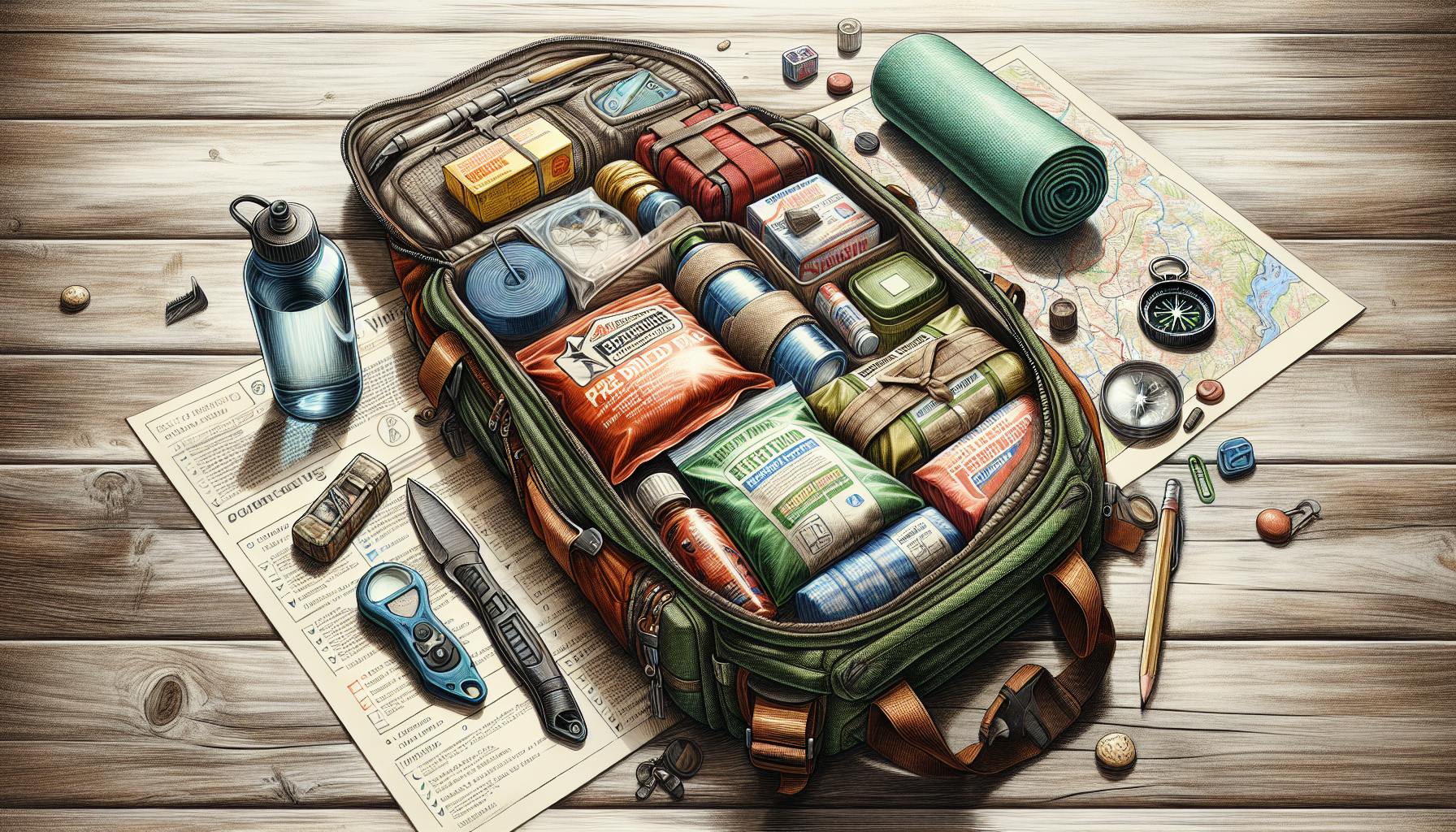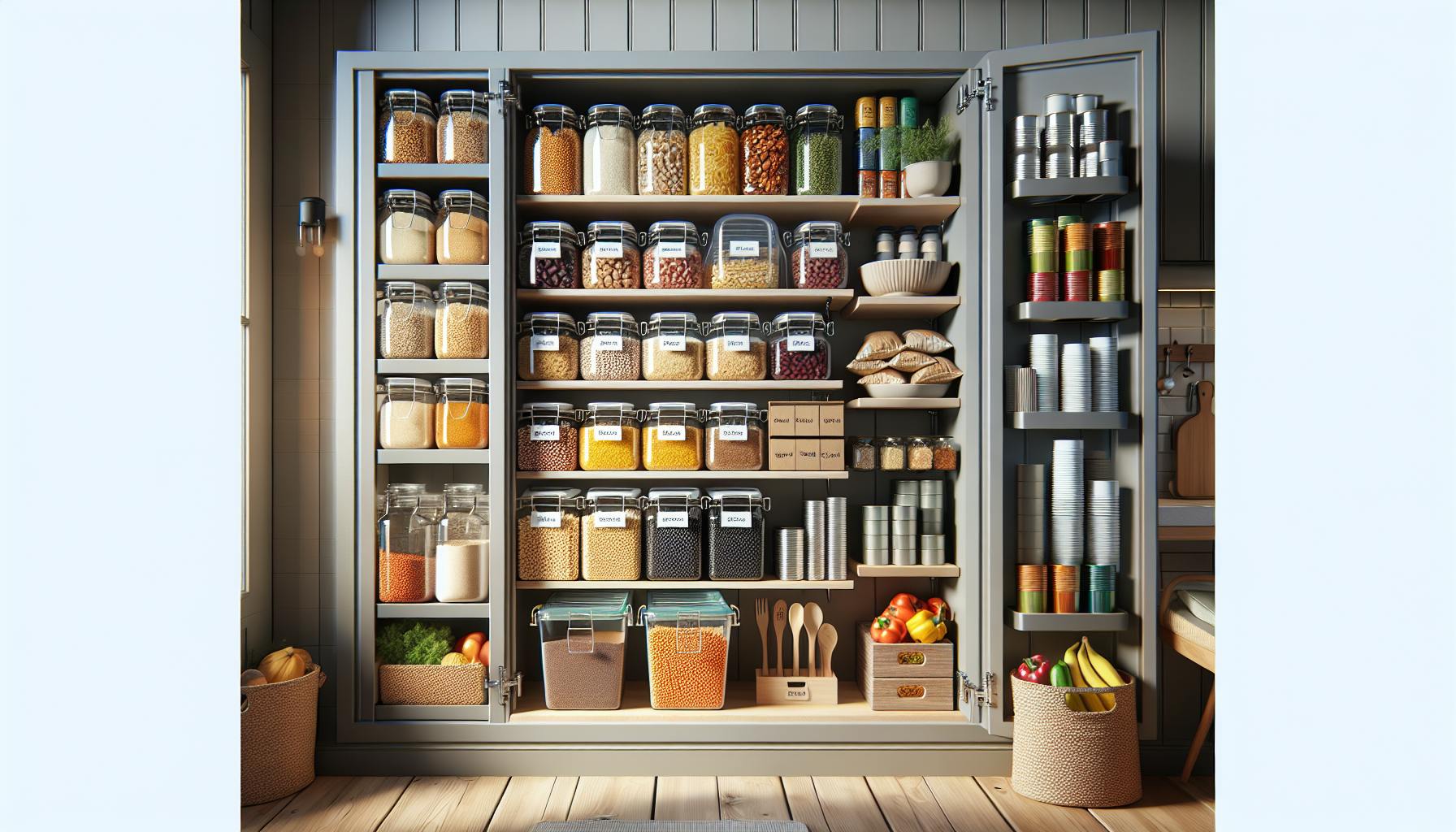Selecting an effective tactical bivvy sack is crucial for outdoor enthusiasts and survivalists.
This guide will analyze the key features to look for when choosing a durable, weather-resistant, and portable tact bivvy sleeping system.
We'll review materials and construction, storage size, comfort factors, and provide tact bivvy recommendations for your emergency preparedness kit.
Introduction to Tact Bivvies
A tact bivvy, short for "bivouac sack", is an ultra-lightweight and waterproof shelter used in survival and emergency situations. As an essential piece of gear for any prepper, a quality tact bivvy provides protection from the elements while taking up very little space.
Defining the Tact Bivvy Sack
An effective tact bivvy sack is made from durable, rip-stop fabric that can withstand the stresses of outdoor use. Key features to look for include:
- Waterproof and breathable material such as silicone-coated nylon to prevent moisture buildup
- Taped or welded seams for weatherproofing
- Drawcord and reflective trim for easy setup in the dark
- Compact, vacuum-sealed storage bag for portability
Premium tact bivvies strike a balance between durability and packable size. High-quality materials allow a bivvy to be compressed to the size of a small soda can.
Key Features to Look For in a Bivvy Bag
When selecting a bivvy bag, key criteria include:
- Windproofing: A windproof layer blocks drafts for warmth retention during cold weather.
- Water resistance: Waterproof fabric keeps the user dry in wet conditions. Look for a hydrostatic rating over 5,000mm.
- Packed weight: Ultralight bivvy sacks weigh under 1 pound for easy carrying.
- Packed size: Compression stuff sacks reduce a bivvy to the size of a 1-liter bottle.
- Breathability: Look for moisture-wicking fabric to prevent condensation buildup inside.
The best tactical bivvy balances lightweight portability with weatherproofing features to provide reliable protection in a survival situation. Carefully examine the materials and construction to determine durability over years of use. With attention to detail, a quality bivvy sack will serve as an indispensable piece of emergency gear.
Why use a bivvy and not a tent?
A bivvy, short for bivouac shelter, offers key advantages over a tent that make it an appealing option for certain outdoor activities and situations. Here are some of the main reasons to choose a bivvy over a tent:
Ultralightweight and Compact
Bivvies are designed to be ultralight shelters, often weighing 1-2 lbs or less. They pack down very small into an included compression sack for easy storage. This makes them ideal for ultralight backpacking where every ounce counts. They take up much less space than a tent.
Faster Setup
With no poles or complex pitching required, most bivvies allow you to simply unfurl them on the ground and climb inside in seconds. This enables quick access to shelter in bad weather and also faster break down times when getting an early start on the trail.
Retain Natural Connection
Bivvies are essentially waterproof and windproof sleeping bag covers that allow you to sleep in the open rather than being fully enclosed. This provides a greater feeling of connection with your surroundings compared to being zipped up in a tent.
Budget-Friendly
Quality bivvies often retail for $100 or less, making them generally cheaper than tents while still providing basic shelter needs. This makes them appealing for those on a budget or not needing a full tent setup.
So in summary, tact bivvies shine for ultralight hikers prioritizing weight savings, minimalists wanting a pared-down kit, and outdoorists wanting to better connect with nature. They trade off livable space and weather protection compared to tents in order to achieve these advantages.
Are bivvy bags worth it?
Bivvy bags can provide a number of benefits that make them worth considering as part of your survival gear.
Key Advantages
-
Small packable size: A bivvy bag packs down much smaller than a tent, leaving more room for other critical gear in your backpack. They weigh very little as well.
-
Warmth: Bivvy bags help retain body heat, keeping you warmer than just using a sleeping bag alone. The enclosed design traps heat close to your body.
-
Water resistance: Most bivvy bags use waterproof or water-resistant fabrics to prevent moisture from seeping in. This helps keep you and your sleeping bag dry.
-
Low cost: Bivvy bags are generally inexpensive compared to tents and even some sleeping bags. This makes them an affordable emergency shelter option.
Considerations
-
Limited space: Bivvy bags provide minimal space to move around. Make sure you can sleep okay in confined areas before relying solely on a bivvy.
-
Ventilation: Some bivvy bags can get stuffy due to the enclosed design. Look for versions with ventilation features if this is a concern.
So in summary, bivvy bags make excellent additions to survival kits due to their extreme portability and weather protection. Just be aware of the tight space constraints before purchasing.
Do you need a groundsheet under a bivvy?
You typically do not need a groundsheet underneath a bivvy bag. Bivvy bags are designed to provide lightweight, minimalist shelter directly on the ground. Here are some key points:
-
Bivvy bags allow you to sleep directly on the ground, providing a waterproof and windproof layer between you and the elements. This makes them faster to set up and more portable than a tent.
-
Quality bivvy bags are made of durable, waterproof materials that protect you from moisture on the ground. Materials like silicone coated nylon or Gore-Tex are excellent at keeping ground moisture out.
-
Using an inflatable sleeping pad or closed-cell foam sleeping pad inside your bivvy bag provides insulation and cushioning from the hard ground. This helps significantly with comfort.
-
In warm weather when condensation buildup inside a sealed bivvy bag could be an issue, some bivvy bags have ventilation features like mesh panels. This allows increased airflow.
-
If sleeping on especially wet or muddy ground, or in very cold weather, adding a lightweight tarp or plastic groundsheet underneath provides an extra moisture barrier. But this is not necessary in most conditions.
So in summary, a properly designed bivvy bag allows you to sleep comfortably right on the bare ground without any extra layers needed. Carry a sleeping pad for insulation and use a groundsheet only when conditions demand it. This makes your emergency shelter faster to deploy and easier to carry.
Materials and Construction of a Tact Bivvy
Reflective Mylar and Emergency Blankets
Emergency blankets made of reflective mylar are a common component in many tact bivvies. Mylar is highly effective at retaining body heat thanks to its reflective properties. It acts as an insulation layer that bounces heat back towards the body. This helps maintain warmth in cold conditions.
However, mylar emergency blankets on their own lack durability. They can easily rip or develop holes from sharp objects. So while great for heat retention, they need an outer protective layer for longevity.
Ripstop Nylon: The Backbone of Durability
Ripstop nylon lives up to its name - specialized woven threads act to stop tears from spreading across the fabric. This makes it extremely durable and resistant to rips and abrasions.
It's a common choice for the outer shell of tact bivvies. Ripstop nylon protects the interior reflective layer, while adding very little weight. Its high strength-to-weight ratio makes it ideal for ultralight backpacking gear like bivvy sacks.
The ripstop weave also enhances water resistance. While not fully waterproof, it can shield light precipitation and splashback.
Waterproof yet Breathable Outer Fabric
The best tact bivvies feature an outer layer made of waterproof, breathable fabric. Materials like eVent and Gore-Tex use a microporous membrane that blocks liquid water droplets while allowing water vapor molecules to escape.
This property balances two important functions: preventing external moisture from seeping in while enabling internal condensation to vent out. Staying dry is critical for warmth and comfort when spending long periods of time in a compact bivvy sack.
Specialized waterproof/breathable fabrics add expense but provide clear performance benefits for tactical bivvy bags used in extreme conditions.
sbb-itb-b932644
Assessing Durability and Craftsmanship
When selecting a tact bivvy for your survival kit, durability and craftsmanship are key factors to consider. A well-constructed bivvy can withstand years of rugged use, while a poorly made one may fail after just a few outings.
Reinforced Stitching and Easy to Repair Solutions
Focus on models with reinforced stitching using bar tacking to strengthen high-stress points like zipper ends, hoods, and stake points. This prevents rips and tears during setup and breakdown, extending your bivvy's usable lifetime. Consider repair kits or patch solutions as well to fix minor damage in the field.
Sealed Seams: Ensuring Waterproof Integrity
Fully sealed seams are vital for maintaining waterproofness over years of service. Heat-sealed seam tape creates an impenetrable moisture barrier along stitch lines. Durable water repellant (DWR) coatings also prevent leakage through the outer fabric. Prioritize bivvies with fully taped seams and waterproof fabric coatings.
YKK Zippers: Smooth Operation and Durability
High quality zippers like those from YKK withstand decades of grit, dirt, and UV exposure while still smoothly operating. Lesser zippers may snag or break after limited use. While pricier, reliable YKK zippers greatly improve lifetime durability.
Focusing on reinforced stitching, fully sealed seams, waterproof fabric coatings, and smooth operating zippers allows your tact bivvy to provide reliable protection through years of rugged use. Prioritizing craftsmanship and durability leads to a bivvy you can trust when you need it most.
Storage and Portability
When selecting a tact bivvy for your survival gear, storage size and portability are key factors to consider. The ideal bivvy will compress down small so it can easily fit in your backpack, while also providing attachment points to securely lash it to the exterior of your pack.
Compression Stuff Sack for Maximum Compactness
A compression stuff sack is a must-have accessory for a quality bivvy. This type of stuff sack uses straps or drawcords to significantly reduce the storage size of the bivvy. Compression ratios of 5:1 or even 10:1 are possible with an integrated compression stuff sack. This allows your tact bivvy to take up very little room in your pack.
Prioritize bivvies that include a dedicated compression stuff sack specially contoured to the size and shape of the bivvy. Custom fits ensure maximum space savings. The stuff sack material should also be durable - look for ripstop nylon or vinyl coatings to prevent tears.
With a good compression stuff sack, your bivvy will take up less room than a Nalgene bottle. This frees up pack space for other critical survival gear like food, water, first aid supplies, and tools.
Paracord Loops for Backpacking Clothes Attachment
Attachment points on your bivvy allow you to securely lash it to the exterior of your backpack with paracord or other cordage. Durable webbing loops sewn into the stuff sack are ideal for this purpose.
You can also use these anchor points to integrate your bivvy into your backpacking clothes system. Attach your bivvy stuff sack to the back of your pack, then clip your rain jacket, fleece, etc onto it. This keeps your extra layers readily accessible when you need them.
Prioritize bivvies with at least 4 reinforced attachment loops spaced evenly around the stuff sack. This provides flexibility on where and how you lash down your vital emergency bivy sack.
With smart compression and exterior lash points, even an ultralight tact bivvy can integrate seamlessly into your existing hiking kit. Just stash it, lash it down, and don't worry about it until an emergency strikes.
Choosing the Right Size Tact Bivvy for Comfort
Length Accommodates Height for Full Coverage
When selecting a tact bivvy, it's important to choose one that is long enough to fully cover your height when lying down. This ensures you can slip all the way inside and prevent heat loss.
For example, if you are 6 feet tall, you'll want to select a bivvy that is at least 84 inches long. Going a bit longer, such as 90 inches, allows extra room to move around. If the bivvy is too short, your feet or head may be exposed, leading to faster cooling.
Balance Width and Breathability for Comfort
The width or girth of a tact bivvy impacts comfort, but also breathability and efficiency. Wider bivvies around 40 inches allow more space to move inside and feel less constricted. However, they also have more surface area for heat to dissipate.
More minimalist bivvies around 20 inches wide conserve body heat extremely well, but sacrifice some comfort due to the tight enclosure. Evaluate your intended climate and duration inside the bivvy when deciding on width. Colder weather merits a narrower width for heat retention, while warmer climates allow the luxury of more interior space.
Tact Bivvy Review: Top Recommendations
A tact bivvy is an essential piece of survival gear that provides shelter and retains body heat in emergency situations. When choosing a tact bivvy, key features to evaluate include the material, durability, and compactness.
Tact Bivvy Sleeping Bag Review: Best Overall
The SOL Emergency Bivvy Sleeping Bag is a top choice for tactical bivvy sleeping bags. Key benefits:
- Durable material with a 90% heat retention rate to prevent hypothermia
- Trusted SOL brand known for survival gear quality and reliability
- Lightweight, compact, and easy to store in a backpack or emergency kit
With its ability to reflect body heat and protect against the elements, the SOL Emergency Bivvy Sleeping Bag is a smart investment for your survival preparedness.
Most Durable Tact Bivvy: A Review
If extreme durability is your top priority, the Survival Frog TACT Bivvy is an excellent option constructed of rugged materials designed to withstand tough conditions.
- Ripstop fabric with polyurethane coating for waterproofing
- Reinforced, taped seams tested to survive harsh weather and rough handling
- Compact stuff sack included for easy storage while backpacking or in emergency kits
When evaluating tact bivvies, the Survival Frog TACT Bivvy stands out for its extreme durability. The reinforced construction gives peace of mind that this emergency shelter will perform when you need it most.
Frequently Asked Questions About Tact Bivvies
Are Tact Bivvies Fully Waterproof?
While tact bivvies provide water resistance, most standard models are not fully waterproof unless they have taped seams. The outer layer is typically made of a waterproof and windproof material that repels rain and snow. However, in extreme weather or during flooding, seepage can still occur through the seams.
To ensure full waterproofing, look for a bivvy bag that specifies taped or sealed seams. This bonds the fabric pieces together to seal all potential entry points. With this construction, the bivvy sack becomes fully waterproof and can withstand submersion in water.
How Do You Clean and Maintain a Tact Bivvy?
Proper cleaning and maintenance is important to keep your tact bivvy in good working condition. Here are some tips:
- Hand wash only using a mild detergent or soap. Avoid machine washing or dry cleaning, which can degrade the coatings.
- Rinse thoroughly with clean water to remove all soap residue. Remaining residue can reduce water resistance.
- Air dry fully. Do not machine dry. High heat can damage reflective coatings and waterproof membranes.
- Store uncompressed. Keeping compacted long-term may lead to creases and cracks over time.
- Avoid exposing to direct flames or embers. The outer fabric is fire retardant but still flammable.
- Re-waterproof periodically with a silicone or UV-based waterproofing spray if water resistance seems to be reduced.
Gently hand washing and air drying is the ideal approach. This cleans without being too harsh on the fabrics and coatings, extending the life of your bivvy sack. Proper storage uncompressed also prevents damage over time. Following these care recommendations helps maintain performance and durability.
Conclusion: The Essential Emergency Bivy Sack
A tact bivvy is an indispensable piece of emergency shelter gear due to its highly portable size and ability to retain essential body heat. When selecting a tact bivvy for your survival supplies, focus on the following key criteria:
-
Waterproof Yet Breathable Fabric: Choose a bivvy made from waterproof, windproof, and breathable fabrics like Gore-Tex to prevent moisture from entering while allowing sweat vapor to escape. This helps regulate body temperature.
-
Ripstop Durability: Ripstop nylon or polyester fabrics add durability against tears while remaining lightweight. This helps the bivvy last longer through repeated use.
-
Compressed Size: Compact tactical bivvies compress down to the size of a softball or smaller. This allows easy storage in a backpack, bug out bag, or emergency kit.
-
Quality Craftsmanship: Choose bivvies with fully taped seams, reinforced stitching, and features like reflective trim for visibility. Prioritize reputable outdoor brands known for reliability.
The right emergency bivy sack provides indispensable, compact, weather-resistant shelter to get through unexpected emergencies or outdoor excursions. Focus on critical features like waterproof, breathable, and ripstop fabrics in a compact, packable, and thoughtfully designed product.


